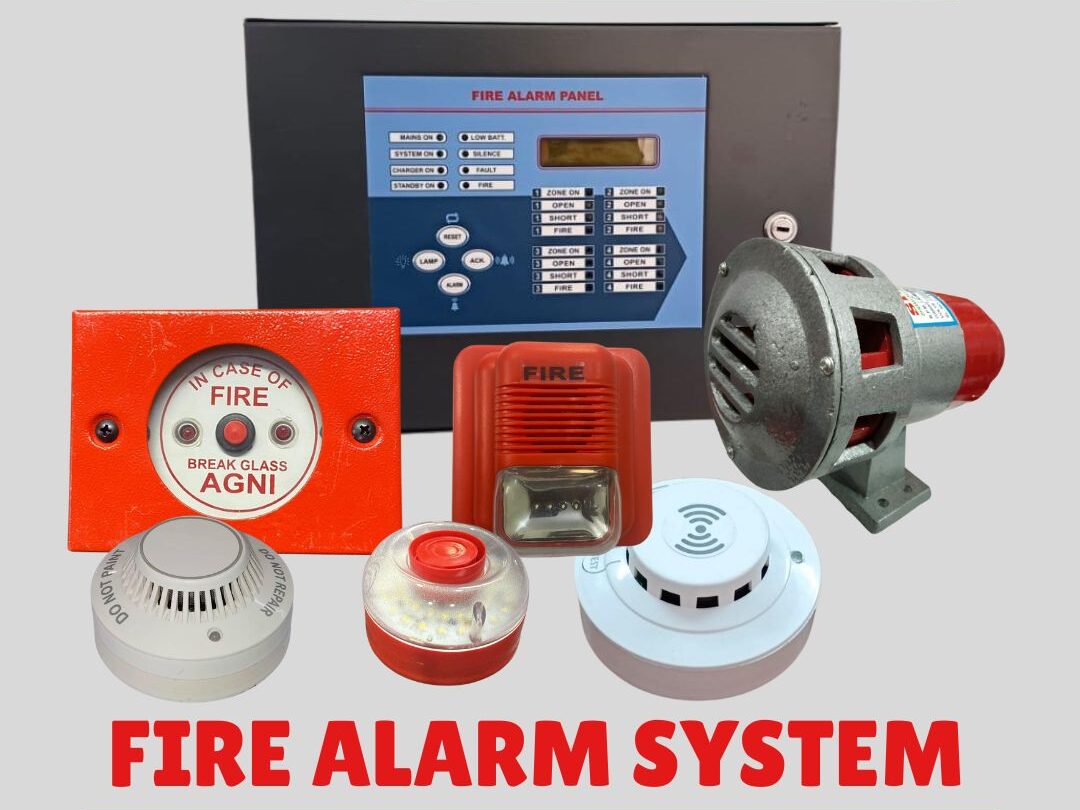
Fire safety is one of the most critical aspects of any residential, commercial, or industrial building. Among all fire protection measures, a Fire Alarm System serves as the first line of defense — detecting fires early and alerting occupants before the situation escalates.
Understanding how these systems work and why they’re essential can help you make informed decisions for your building’s safety. Let’s explore everything you need to know about fire alarm systems, their components, and their importance in modern infrastructure.
What Is a Fire Alarm System?
A Fire Alarm System is an electronic setup designed to detect fire, smoke, or heat and trigger an alarm to warn occupants of potential danger. It forms a crucial part of a building’s fire detection system, ensuring early response and evacuation before the fire spreads.
These systems are interconnected through sensors, alarms, and control panels that continuously monitor the environment. Once a fire is detected, the system sends both audible and visual alerts, and in some cases, directly notifies emergency services.
How Does a Fire Alarm System Work?
A Fire Alarm System functions through a series of integrated components that work together to detect and respond to fire hazards. Here’s how it works step by step:
- Detection:
The system uses fire detector such as smoke detectors and heat detectors to sense early signs of a fire. During smoke detector installation, these devices are placed strategically across rooms and corridors to ensure maximum coverage. - Activation:
When smoke, heat, or flames are detected, the sensor sends a signal to the fire alarm panel — the brain of the entire system. The panel analyzes this signal to determine whether it’s a real threat or a false alarm. - Alarm Notification:
If a fire is confirmed, the fire alarm panel activates the fire smoke detectors, sirens, and visual indicators, prompting evacuation. - Manual Triggering:
In addition to automatic detection, most systems include Manual Call Points (MCPs) — wall-mounted boxes that allow individuals to manually raise an alarm by pressing or breaking the glass. - Response and Integration:
Advanced fire alarm systems can also be integrated with fire suppression systems, ensuring instant emergency response and enhanced protection.
Main Components of a Fire Alarm System
1. Smoke and Heat Detector
Smoke detectors sense airborne particles, while heat detectors respond to rising temperatures. Proper smoke detector installation ensures these devices detect danger in time to alert building occupants. These are usually installed on ceilings and near escape routes for maximum effectiveness.
2. Manual Call Point
A Manual Call Point (MCP) allows individuals to manually activate the alarm in case of fire detection. It’s usually placed near exits, corridors, and staircases for quick access.
3. Hooters and Strobe
Hooters and strobes are critical for ensuring everyone is alerted during a fire emergency. The loud sound of hooters and bright strobe lights guide people toward exits — especially useful in noisy environments or areas with poor visibility.
4. Fire Alarm Control Panel
The Fire Alarm Control Panel is the central hub of the entire fire detection system. It receives inputs from detectors, processes the information, and triggers the alarm. The panel display helps operators identify the exact zone of the fire for faster response.
5. Emergency Light
In a fire situation, smoke and power failures can cause visibility loss. These lights automatically turn on when the main power fails, guiding occupants toward safe exits even in complete darkness.
Why Every Building Needs a Fire Alarm System
Installing a Fire Alarm System isn’t just a safety measure — it’s a legal and moral responsibility. Here’s why every building, regardless of size or type, should have one:
1. Early Fire Detection Saves Lives
A well-maintained fire detection system identifies hazards in their earliest stages. Early alerts give occupants enough time to evacuate and prevent injuries or fatalities.
2. Protects Property and Equipment
Fires can cause severe damage to buildings, machinery, and data. A reliable fire detector and fire smoke detector minimize losses by enabling rapid firefighting response.
3. Legal Compliance and Insurance Requirements
Local fire safety regulations and the National Building Code mandate fire alarm systems in most commercial and residential structures. Compliance also ensures smoother insurance claim processes.
4. Continuous Monitoring and Peace of Mind
Modern fire alarm systems can be connected to remote monitoring centers, providing 24/7 surveillance and instant emergency alerts — offering complete peace of mind.
Maintenance and Professional Installation
Even the most advanced fire alarm system needs regular testing and servicing to ensure proper functionality. Professional smoke detector installation and system setup by certified experts are vital to prevent false alarms or failures.
Routine maintenance includes:
- Checking the fire alarm control panel and backup batteries
- Testing each manual call point and alarm sounder
- Cleaning detectors to remove dust or debris
- Verifying emergency light operation
- Conducting periodic system audits
Partnering with a trusted fire safety company like Naman Fire Engineers ensures your system meets safety standards and performs efficiently during emergencies.
Final Thoughts
A Fire Alarm System is an essential safeguard for any building. From fire smoke detectors to manual call points, hooters, and emergency lights, every component plays a vital role in ensuring early detection and safe evacuation.
Whether you’re setting up a new facility or upgrading an existing one, always choose professional installation and maintenance services.
Contact Naman Fire Engineers today for expert fire alarm system installation, testing, and maintenance — and ensure your property and people stay protected at all times.
📢 Follow us on Instagram and stay updated with the latest fire safety tips, equipment insights, and emergency readiness advice.
